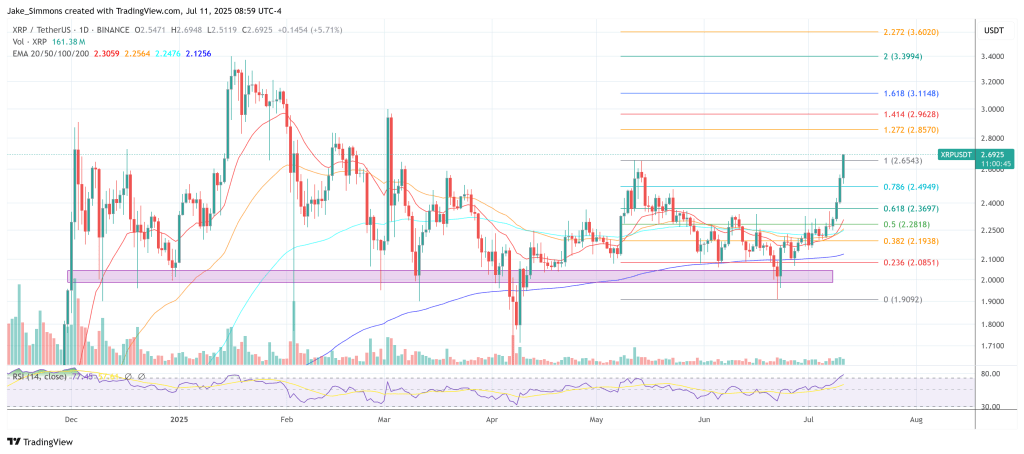Ah, dear reader, have you heard the latest news from the vast savannahs of Kenya? The noble Ripple, in partnership with the esteemed Mercy Corps Ventures and the innovative DIVA Donate, has conducted a most fascinating experiment in the land of Laikipia North!
Imagine, if you will, a stablecoin named RLUSD, a creation of the brilliant minds at Ripple, being deployed for the first time in the field as a drought-insurance rail. And what a success it was! The four-month “anticipatory aid” experiment insured 517 pastoralists, with a whopping 70% of them being women. Quite the progressive move, wouldn’t you say?
Ripple’s RLUSD Stablecoin: A Kenyan Adventure!
Ripple, in a post on X, shared the delightful news: “The Ripple Impact drought insurance pilot in Kenya concluded, successfully insuring 517 pastoralists (70% women) using RLUSD. Satellite data showed favorable vegetation during the pilot period, so no payout was triggered. This unused RLUSD rolls into the next pilot phase…”
Built in partnership with Mercy Corps Ventures and DeFi aid platform DIVA Donate, the scheme escrowed donations in RLUSD on Ethereum and released them only if satellite-derived Normalized Difference Vegetation Index (NDVI) readings fell below a calibrated threshold of 0.55. During the March-to-June observation window, vegetation remained above 0.61, so smart contracts never unlocked the funds—precisely the outcome expected in a non-drought year.
Because no trigger was hit, the full RLUSD pool now carries forward for the short-rains dry spell that begins in October. DIVA Donate says the next phase will widen the cohort to 533 herder households and aims to raise $40,000, augmented by about $12,000 in unspent capital from earlier Mercy Corps Ventures and Arbitrum-backed campaigns.
For Ripple, the pilot doubles as a real-world stress test of RLUSD’s programmability. Launched in late 2024 on both the XRP Ledger and Ethereum, the stablecoin crossed the $500 million circulation mark this week and secured Bank of New York Mellon as primary reserve custodian, underscoring a compliance-first positioning in an increasingly competitive stable-asset sector.
Humanitarian technologists have long argued that pre-disaster cash beats post-disaster relief; the Laikipia experiment adds a cryptographic audit trail and automatic execution layer to that logic. By chaining disbursements to open-source oracles, donors can verify that money is held—and, when nature cooperates, preserved—exactly as promised. If October’s NDVI readings break below the floor, RLUSD will move straight to pastoralists’ mobile wallets without an intermediary in sight.
Whether the model scales will depend on satellite accuracy, mobile-money liquidity and stablecoin regulatory latitude in East Africa. For now, proponents regard the zero-payout result not as a dud but as statistical validation: in a season of healthy pasture, insurance is supposed to sit idle—while quietly extending its safety net into the next risk cycle.
At press time, XRP traded at $2.69.

Read More
- Brace Yourself: Bitcoin’s Social Media FOMO Warning! 😱💥
- Elon Musk’s Bitcoin Love Affair: Is It True Love or Just a Fling? 💔💰
- Schools Shut Down?! 🤯 Crypto-Fueled Chaos!
- Dogecoin Whales Are Back: Is the Moon Mission Reloading? 🚀🐶
- Why Pi Coin Users Are Betting on a Dual-Value Model: Will It Pay Off? 🤔
- Bitlayer’s Bitcoin Bridge: A Leap for DeFi or a Hacker’s New Playground? 🤔
- Bitcoin’s $1.5 Billion ETF Inflows: A New All-Time High or Just Another Mirage? 🤔
- Senator Slams ‘Disaster’ Crypto Bill: ‘Worse Than None!’ 😱
- Memecoin Supercycle? Whales are Betting Big on PEPE & WIF! 🌊🚀
- Ripple and SEC: The Legal Tango Continues! 💃🕺
2025-07-12 04:43